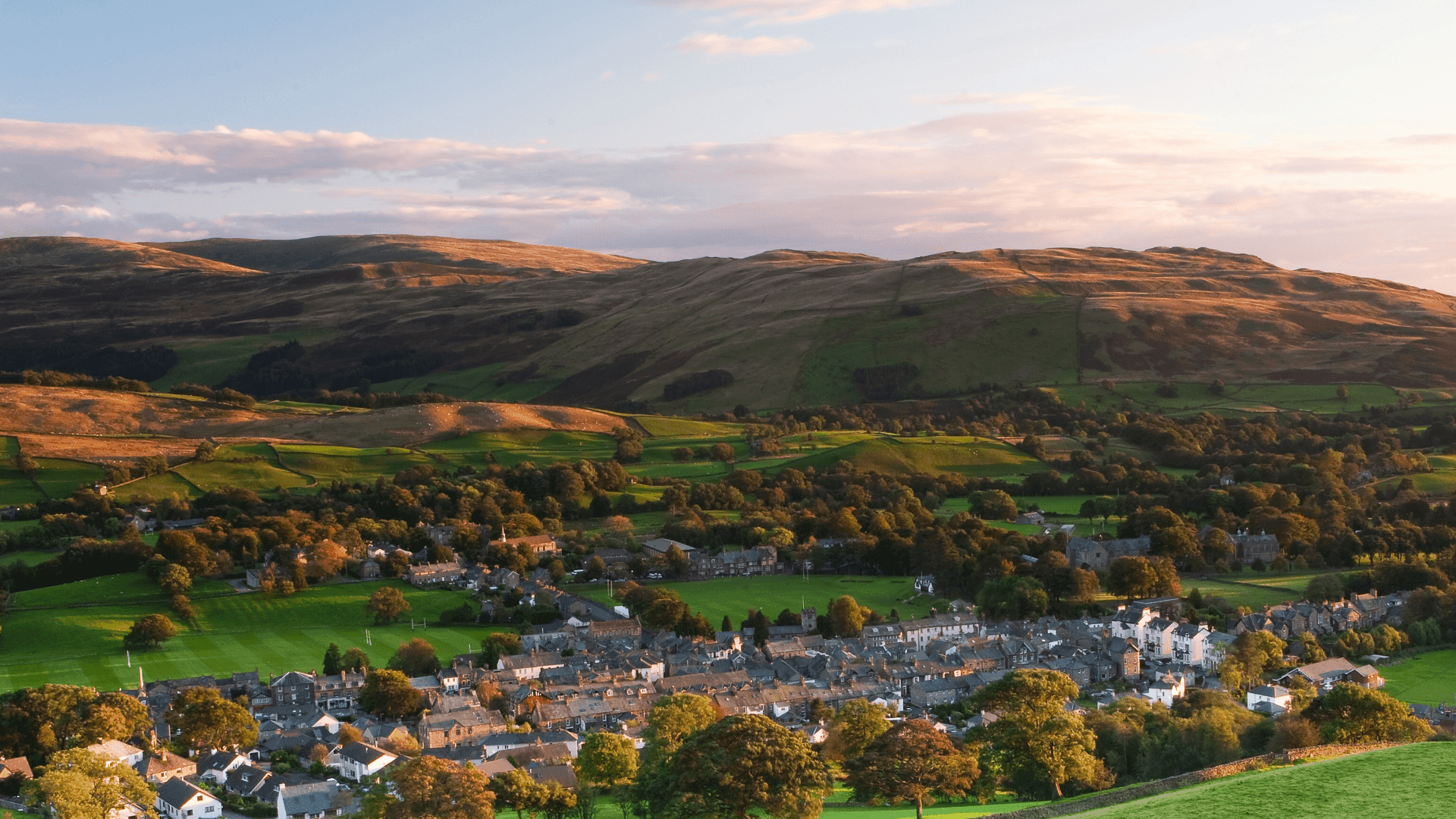
The main town in the area is Sedbergh and it is the largest town that lies within the Yorkshire Dales. Technically, since the Government’s reorganisation of the county boundaries in 1974, it lies within Cumbria but rather has the feel of a border town lying on the edge of the Yorkshire Dales and the Lake District. Sedbergh still retains its old-world charm with its cobbled high street, handsome houses and the backdrop of the magnificent Howgill Fells. Situated on the confluence of four rivers, the town historically has been an important meeting point where trade routes converged and was the economic centre of the area. Several woollen mills were established where yarn for hand knitters was spun as well as woollen cloth being woven. The town continued to prosper and grow well into the 19th century.
The Western Dales are amongst some of the most beautiful and remote areas of Britain and are often missed by visitors driving to the Lakes or touring the more popular dales.

The main town in the area is Sedbergh and it is the largest town that lies within the Yorkshire Dales. Technically, since the Government’s reorganisation of the county boundaries in 1974, it lies within Cumbria but rather has the feel of a border town lying on the edge of the Yorkshire Dales and the Lake District. Sedbergh still retains its old-world charm with its cobbled high street, handsome houses and the backdrop of the magnificent Howgill Fells. Situated on the confluence of four rivers, the town historically has been an important meeting point where trade routes converged and was the economic centre of the area. Several woollen mills were established where yarn for hand knitters was spun as well as woollen cloth being woven. The town continued to prosper and grow well into the 19th century.

South of Sedbergh is Dentdale, situated on the River Dee, a narrow valley characterised by white and grey stone cottages. The ten-mile drive from Sedbergh along a single-track road offers breath taking views. In spring and summer, the fields are full of wildflowers and in the autumn and winter months, the colours are equally stunning. In the heart of the valley lies Dent one of the prettiest and quaintest villages in the Yorkshire Dales. Lying in the centre of the village is an enormous memorial stone that stands in memory of Adam Sedgwick, the renowned 18th century Geologist who was born in Dent and educated at Sedbergh School.
DON’T MISS
Farfield Mill See artists at work and see the superb display of artistic crafts for sale with regular exhibitions of different crafts and demonstrations. Learn about the heritage of the mill and the history of the wool industry and the people that lived here. It also has a lovely restaurant with homemade goodies!
Westmoreland Bookshop is a large, independent, family-run bookshop in Sedbergh. They stock over 70,000 books across two floors, mainly second-hand with some new and some antiquarian. In 2023 they were voted by the Booker Prize as one of the best dressed windows displays of independent bookshops in the UK. In 2009, The Guardian voted them as one of the top ten second hand bookshops in the country and author and travel writer author Bill Bryson is a huge fan.
Cautley Spout is a spectacular waterfall tumbling down the side of the hills.
Dent Heritage Centre - Dent Knitters: the tale of the "terrible knitters of Dent" - they were the most famous hand knitters of the Dales and their amazing dexterity is recounted in full at the Dent Heritage Centre. Men, women, and children all knitted and could multi-task whilst knitting, cooking, churning butter or cleaning at the same time.
INTERESTING FACTS
- Dent Station, on the Settle-Carlisle line is the highest mainline station in England. Impressive viaducts at Dent Head and Arten Gill carry the railway high above the valley and offer great views.
- The Howgills, the unusual, rounded hills which walker and writer Alfred Wainwright described as “looking like a herd of elephants”, were ancient pre-carboniferous rocks that were laid down as marine sediments where on the summit some fine alpine flora can be found. You may not see any elephants, but if you are lucky, you may spot the wild fell ponies instead!
- The Calf is the highest point of the Howgill Fells at 678 (2218 ft).
- Sedgwick Trail – a leaflet about 18th century Dent-born geologist Adam Sedgewick is available from National Park Centres. It also contains a geology trail based at Longstone Common on the Garsdale road out of Sedbergh where there is also an interpretation panel. Here the Dent Fault can be seen in rocks beside the river.
- Cautley Barrow is a Bronze Age burial site.
- Cautley Iron Age Settlement - Archaeologists discovered houses and fields of an Iron Age farming community in the valley below Cautley Spout. Families likely lived by grazing cattle and growing crops close to their houses.



